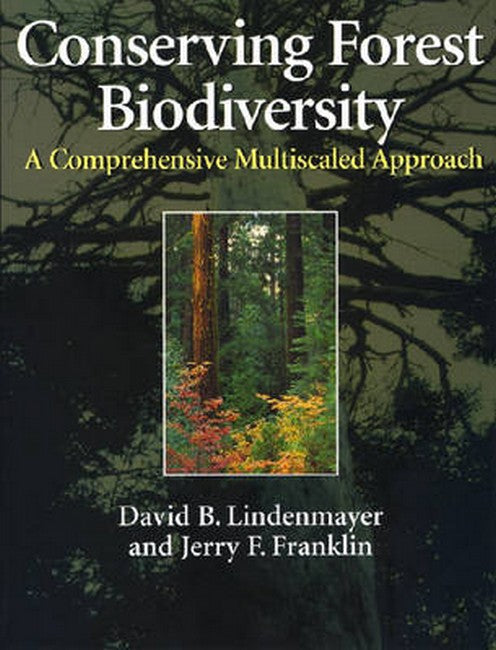PART I. Principles for Biodiversity Conservation in the Matrix
Chapter 1. Critical Roles for the Matrix
Chapter 2. The Matrix and the Major Themes in Landscape Ecology and Conservation Biology
Chapter 3. Objectives and Principle s for Developing Comprehensive Plans for Forest Biodiversity Conservation
Chapter 4. Using Information about Natural Forests, Landscapes, and Disturbance Regimes
PART II. Biodiversity Conservation Across Multiple Spatial Scales
Chapter 5. Importance and Limitations of Large Ecological Reserves
Chapter 6. Landscape-Level Considerations with in the Matrix: Protected Habitatat the Patch Level
Chapter 7. Landscape-Level Considerations: Goals for Structures and Habitats, Transport Systems and Distribution of Harvest Units in Space and Time
Chapter 8. Matrix Management in the Harvested Stand
Chapter 9. Revisiting a Multiscaled Approach to Forest Biodiversity Conservation
Chapter 10. Matrix Management in Plantation Landscapes
PART III. Case Studies in Developing Multiscaled Plans for Biodiversity Conservation
Chapter 11. Case Study 1: Northern, California and Mexican Spotted Owls
Chapter 12. Case Study 2: Leadbeater's Possum and Biodiversity Conservation in Mountain Ash Forests
Chapter 13. Case Study 3: The Tumut Fragmentation Experiment
Chapter 14. Case Study 4: The Biological Dynamics of Forest Fragments Project
Chapter 15. Case Study 5: The Rio Condor Project
PART IV. Adaptive Management and the Human Aspects of Matrix Management
Chapter 16. Adaptive Management and Long-Term Monitoring
Chapter 17. Knowledge Gaps in Forest and Biodiversity Management: Areas for Future Research
Chapter 18. Social and Other Dimensions Associated with Matrix Management
Chapter 19. Future Directions
Literature Cited
About the Authors
Index
Chapter 1. Critical Roles for the Matrix
Chapter 2. The Matrix and the Major Themes in Landscape Ecology and Conservation Biology
Chapter 3. Objectives and Principle s for Developing Comprehensive Plans for Forest Biodiversity Conservation
Chapter 4. Using Information about Natural Forests, Landscapes, and Disturbance Regimes
PART II. Biodiversity Conservation Across Multiple Spatial Scales
Chapter 5. Importance and Limitations of Large Ecological Reserves
Chapter 6. Landscape-Level Considerations with in the Matrix: Protected Habitatat the Patch Level
Chapter 7. Landscape-Level Considerations: Goals for Structures and Habitats, Transport Systems and Distribution of Harvest Units in Space and Time
Chapter 8. Matrix Management in the Harvested Stand
Chapter 9. Revisiting a Multiscaled Approach to Forest Biodiversity Conservation
Chapter 10. Matrix Management in Plantation Landscapes
PART III. Case Studies in Developing Multiscaled Plans for Biodiversity Conservation
Chapter 11. Case Study 1: Northern, California and Mexican Spotted Owls
Chapter 12. Case Study 2: Leadbeater's Possum and Biodiversity Conservation in Mountain Ash Forests
Chapter 13. Case Study 3: The Tumut Fragmentation Experiment
Chapter 14. Case Study 4: The Biological Dynamics of Forest Fragments Project
Chapter 15. Case Study 5: The Rio Condor Project
PART IV. Adaptive Management and the Human Aspects of Matrix Management
Chapter 16. Adaptive Management and Long-Term Monitoring
Chapter 17. Knowledge Gaps in Forest and Biodiversity Management: Areas for Future Research
Chapter 18. Social and Other Dimensions Associated with Matrix Management
Chapter 19. Future Directions
Literature Cited
About the Authors
Index

